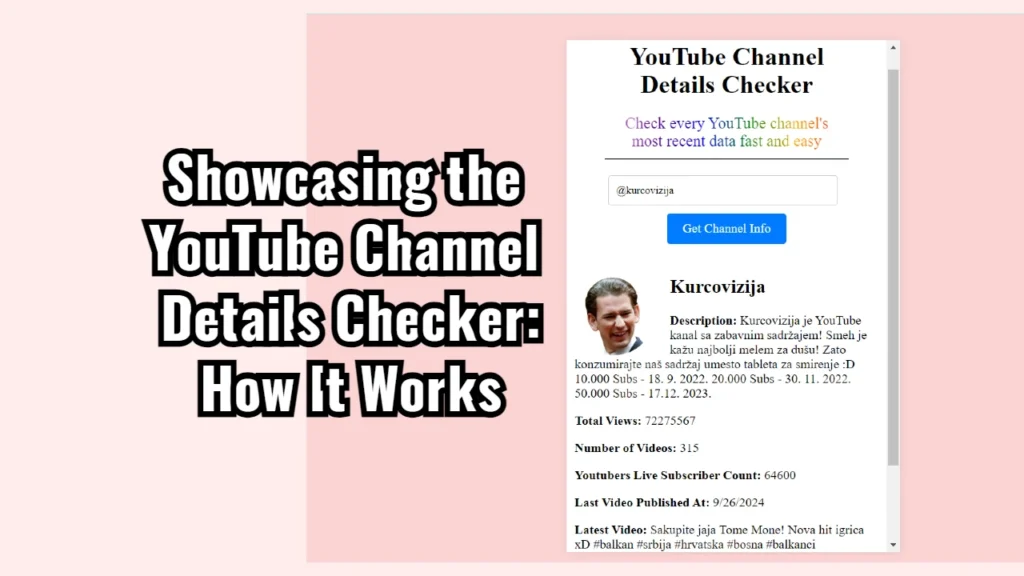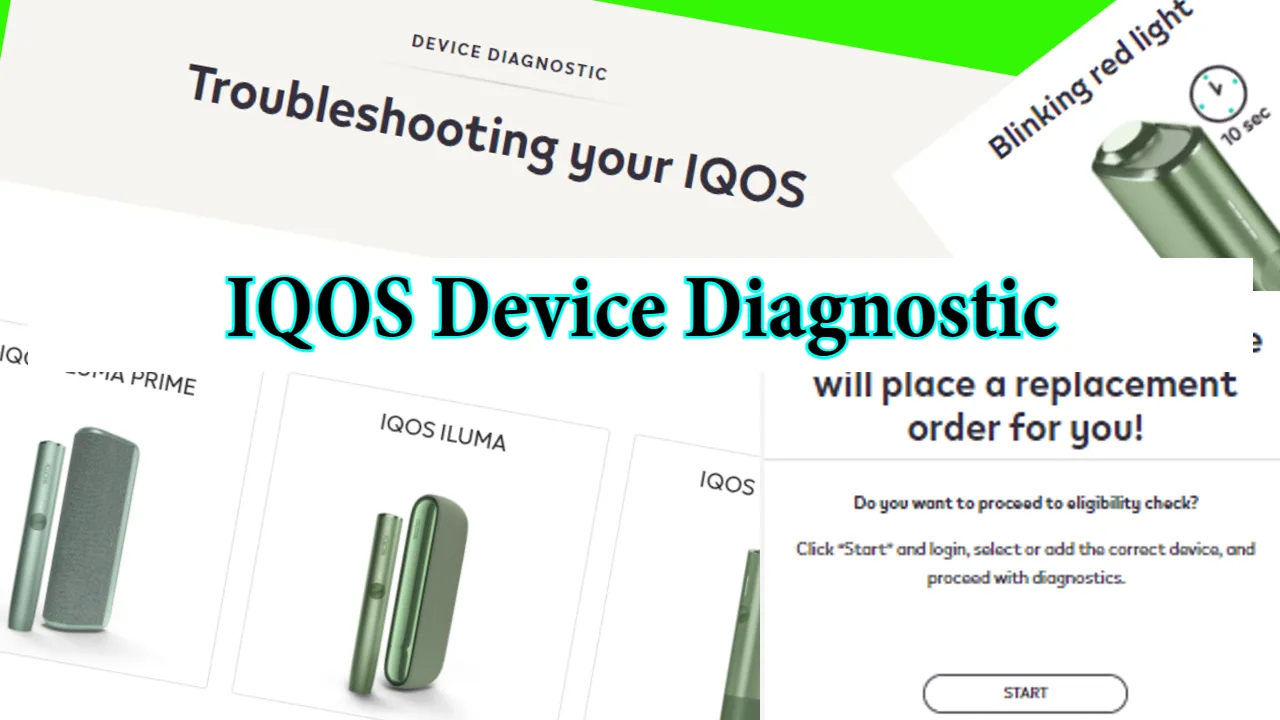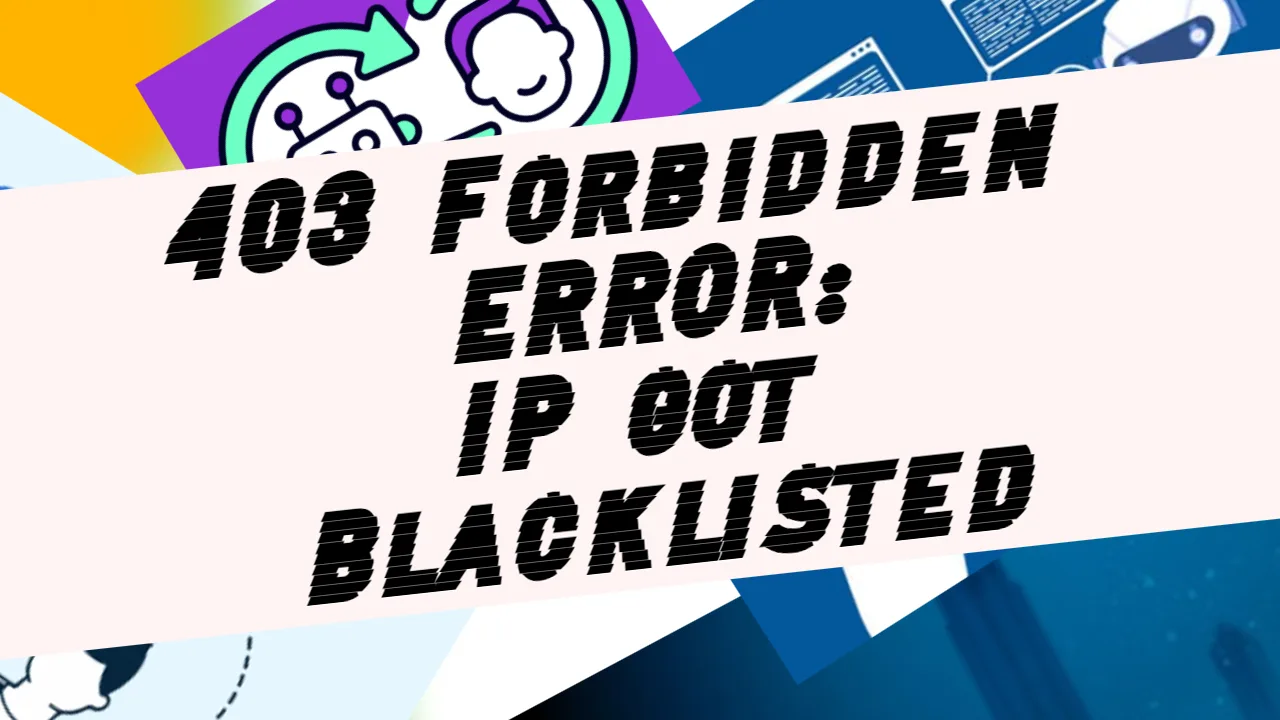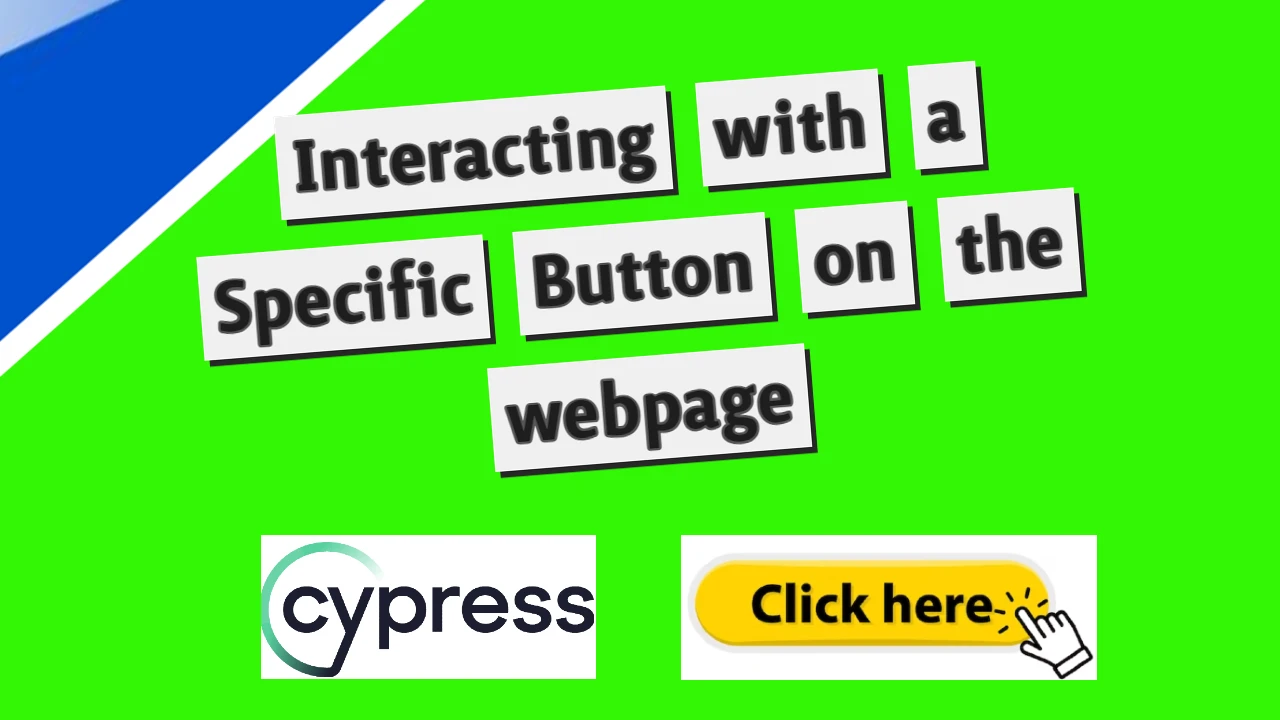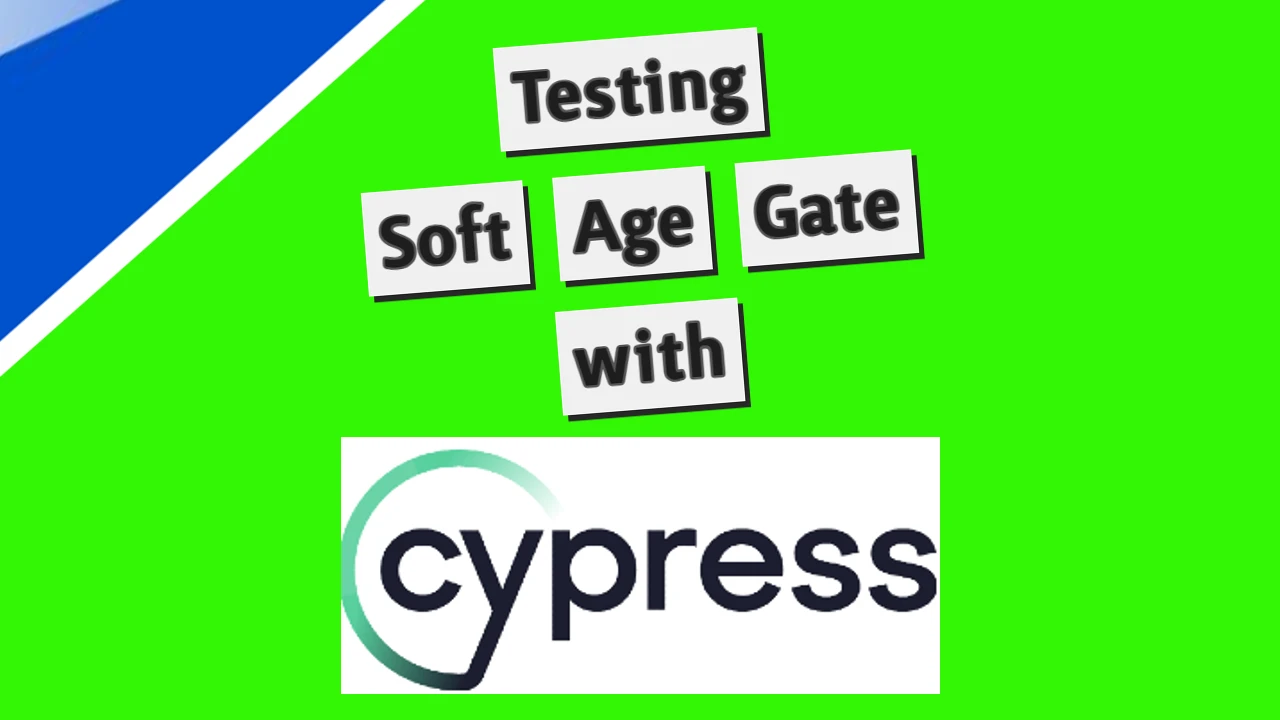I will walk you through the YouTube Channel Details Checker application I built. This web app allows users to quickly and easily retrieve the most recent data about any YouTube channel by simply entering a YouTube Channel ID or username.
I’ll explain how the app works, focusing on the JavaScript code, which is the core part of fetching and displaying channel data. Whether you’re a beginner or have some coding experience, I’ll break down the concepts clearly and easily.
You may try out the app yourself here:
Overview of the Application
The YouTube Channel Details Checker allows users to enter either a YouTube Channel ID or a YouTube username (with the “@” symbol). After entering this information, the app fetches the relevant channel’s statistics and displays it on the page, including the latest video uploaded by the channel.
The app uses the YouTube Data API v3 to retrieve information like the channel’s description, number of videos, total view count, and most recent video data. The app is built using HTML, CSS, and JavaScript, primarily focusing on how we manage the asynchronous data retrieval process in JavaScript.
HTML Structure
The HTML layout is relatively simple. The page includes a text input field where users can enter the Channel ID or username, a button to trigger the data retrieval, and a section where the fetched channel data will be displayed.
<input type="text" id="channelId" placeholder="Enter YouTube Channel ID or @username">
<button onclick="fetchYouTubeData()">Get Channel Info</button>
<div id="channelData" class="channel-info"></div>The input field accepts the Channel ID or username, and the button triggers the fetchYouTubeData() function to start the process of fetching and displaying the channel information.
CSS: Styling the Page
The CSS ensures the app looks clean and responsive, with an organized layout. The styling is focused on centering the content, providing a modern look with clear buttons, and ensuring that the content fits neatly on different screen sizes. We won’t go into much detail about CSS here, but it’s important for making the UI intuitive and user-friendly.
The JavaScript Part: Fetching YouTube Data
Now, let’s dive into the heart of the app—JavaScript. This section covers how we fetch YouTube channel data and display it on the page.
Fetching Data Using the YouTube Data API
We use the YouTube Data API v3 to fetch information about YouTube channels. To access the API, you need an API key, which you can obtain from the Google Cloud Console.
const API_KEY = 'YOUR_API_KEY'; // Replace with your actual API keyWe also define a list of user agents to mimic different device types when making requests to the YouTube API. This helps simulate requests as if they are coming from different devices, making the app more robust.
const userAgents = [
'Mozilla/5.0 (Windows NT 10.0; Win64; x64) AppleWebKit/537.36 (KHTML, like Gecko) Chrome/91.0.4472.124 Safari/537.36',
'Mozilla/5.0 (Macintosh; Intel Mac OS X 10_15_7) AppleWebKit/605.1.15 (KHTML, like Gecko) Version/14.1.1 Safari/605.1.15',
// Add more user agents as needed
];Retrieving Channel Data: The fetchYouTubeData() Function
The main function that fetches the channel data is called fetchYouTubeData(). It retrieves data asynchronously using JavaScript’s fetch API to interact with YouTube’s API. Let’s break down how it works step by step.
Getting the Input: The first thing the function does is grab the value entered by the user in the input field.
let input = document.getElementById('channelId').value.trim();Handling Username Input: If the user enters a username (which starts with an “@” symbol), we need to first convert the username to a channel ID. We achieve this by sending a search request to the YouTube API using the username.
This API call fetches the channel details based on the username provided. If a match is found, we extract the channelId from the response and proceed to fetch detailed channel information.
if (input.startsWith('@')) {
const username = input.substring(1);
const searchResponse = await fetch(`https://www.googleapis.com/youtube/v3/search?part=id&type=channel&q=${username}&key=${API_KEY}`);
}Fetching Channel Data: Once we have the channelId (either directly or after converting from a username), we use another API call to fetch detailed information about the channel. The API response includes the channel’s snippet (title, description, etc.) and statistics (view count, subscriber count, video count).
If no channel data is found, we display an error message to the user.
const channelResponse = await fetch(`https://www.googleapis.com/youtube/v3/channels?part=snippet,contentDetails,statistics&id=${channelId}&key=${API_KEY}`);
const channelData = await channelResponse.json();Fetching the Latest Video: After we have the basic channel information, we fetch the most recent video uploaded by the channel. This is done through another API call that retrieves the videos from the channel, sorted by date, and we extract the latest one.
const videoResponse = await fetch(`https://www.googleapis.com/youtube/v3/search?part=snippet&channelId=${channelId}&type=video&order=date&maxResults=1&key=${API_KEY}`);
const videoData = await videoResponse.json();Displaying the Data: Once we have all the required data (channel details and latest video), we display it on the page by dynamically updating the HTML.
const channelInfo = `
<div>
<img src="${channel.snippet.thumbnails.medium.url}" alt="Channel Thumbnail">
<h2>${channel.snippet.title}</h2>
<p><strong>Description:</strong> ${channel.snippet.description}</p>
<p><strong>Total Views:</strong> ${channel.statistics.viewCount}</p>
<p><strong>Number of Videos:</strong> ${channel.statistics.videoCount}</p>
<p><strong>Subscriber Count:</strong> ${channel.statistics.subscriberCount}</p>
<p><strong>Latest Video:</strong> ${videoInfo.title}</p>
</div>
`;
document.getElementById('channelData').innerHTML = channelInfo;The data is displayed in a clear and readable format, with the channel thumbnail, title, description, and key statistics such as the view and subscriber counts. The latest video information is also shown, including the video title and a thumbnail.
Error Handling
We’ve implemented basic error handling to ensure that the app informs the user with an appropriate error message if something goes wrong (e.g., invalid Channel ID or username, network issues).
catch (error) {
console.error('Error fetching YouTube data:', error);
alert(`Failed to fetch YouTube data: ${error.message}`);
}Asynchronous Requests with async/await
A key part of the app is how we manage asynchronous requests using async/await. This feature allows us to write code that looks synchronous but actually waits for the API responses before proceeding. This is particularly useful when dealing with multiple API calls (such as fetching channel details and videos).
For example:
const channelResponse = await fetch(`https://www.googleapis.com/youtube/v3/channels?part=snippet,statistics&id=${channelId}&key=${API_KEY}`);
const channelData = await channelResponse.json();Here, the await keyword ensures that the code waits for the API response before moving to the next line.
You may get the whole code source for the YouTube Channel Details Checker here: https://github.com/NoToolsNoCraft/YouTube-Account-Checker
Final word!
The YouTube Channel Details Checker app shows you how to use JavaScript and the YouTube Data API to create a working web app that obtains and displays YouTube channel information. The app effectively manages many API calls using fetch requests and async/await. If you’re a novice, this project is an excellent way to learn fundamental JavaScript topics such as asynchronous programming and working with APIs.
